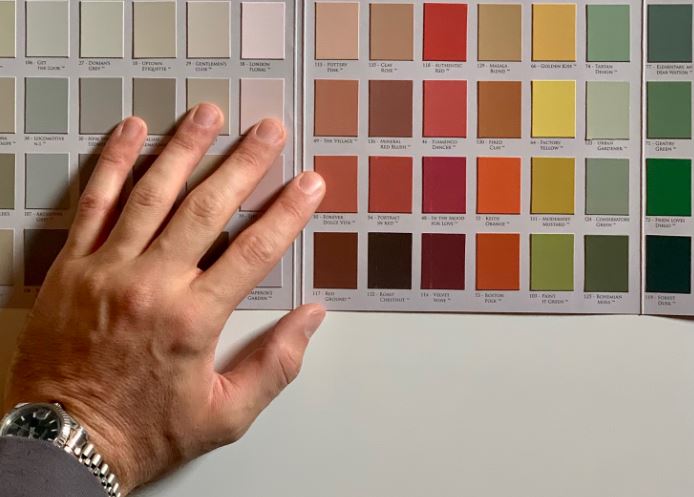Different paints have different properties because they are made for separate purposes. So, exterior paint is meant to handle fading and mildew. On the other hand, interior paint is meant to resist stains and allow cleaning. In order to know the difference between the two kinds of paint, you need to know about the chemistry behind both the types. On that note, let’s take a look at both types of paint.

Difference between exterior and interior wall paint
Though there are several subtle differences between the two types of wall paint, the choice of resin is the primary difference. Resin is what binds the color pigments to the material on which you are painting.
Since exterior paints have to survive moisture exposure and temperature changes, it needs to resist peeling, chipping, and fading. Due to this reason, the resin used to make exterior wall paints has to be softer.
As moisture and temperature aren’t major issues, resins used in interior paints are more rigid. Also, this reduces scuffing and smearing.
Features of exterior paints
- This kind of paint undergoes constant weather exposure. Thus, it needs to offer protection against moisture brought in by snow and rain, and UV rays of the sun. Also, it has to keep fungal growth away.
- Exterior paint is meant to combat mildew and fading. Due to the UV radiation and high temperature, they have to be completely fade-resistant.
- Since soft resins are used in exterior paints, they are highly flexible. So, they do not crack easily on expansion or contraction. It lets them withstand all the ill effects of temperature and moisture changes.
- You can apply this kind of paint to different substrates just by altering the sheen. At the time of rain, the exterior walls absorb a little bit of water. So, the paint is made in a way that it doesn’t bubble, and the water escapes.
- Since exterior paints release more volatile organic compounds, it’s not safe for indoor usage. Also, it needs sunlight for curing.
Features of interior paints
- This kind of paint is meant for aesthetics and decoration. Also, it has elements of easy maintenance, washability, and dampness prevention.
- Interior paints are made in a way that they can tolerate abrasion. Since it has to stay in the same place as people, it’s also made to be way more delicate compared to exterior paints.
- Interior paints can be easily scrubbed and resist staining. It does not have many fade-resistant qualities because it doesn’t face direct sunlight. Moreover, it does not require sunlight for curing.
- Also, it’s washable. Brush and roller marks, along with spots and marks left behind by pets and kids, can be cleaned easily.
- This type of paint has zero or low amount of volatile organic compounds. It lowers health risks and is crucial to preserve the air quality at home.
The endnote
And that’s all you need to know about the difference between interior and exterior paints. Hopefully, it will be easier for you to select and purchase both types of paint.




































